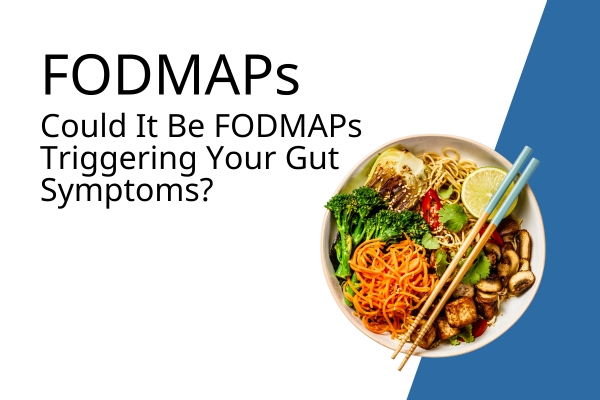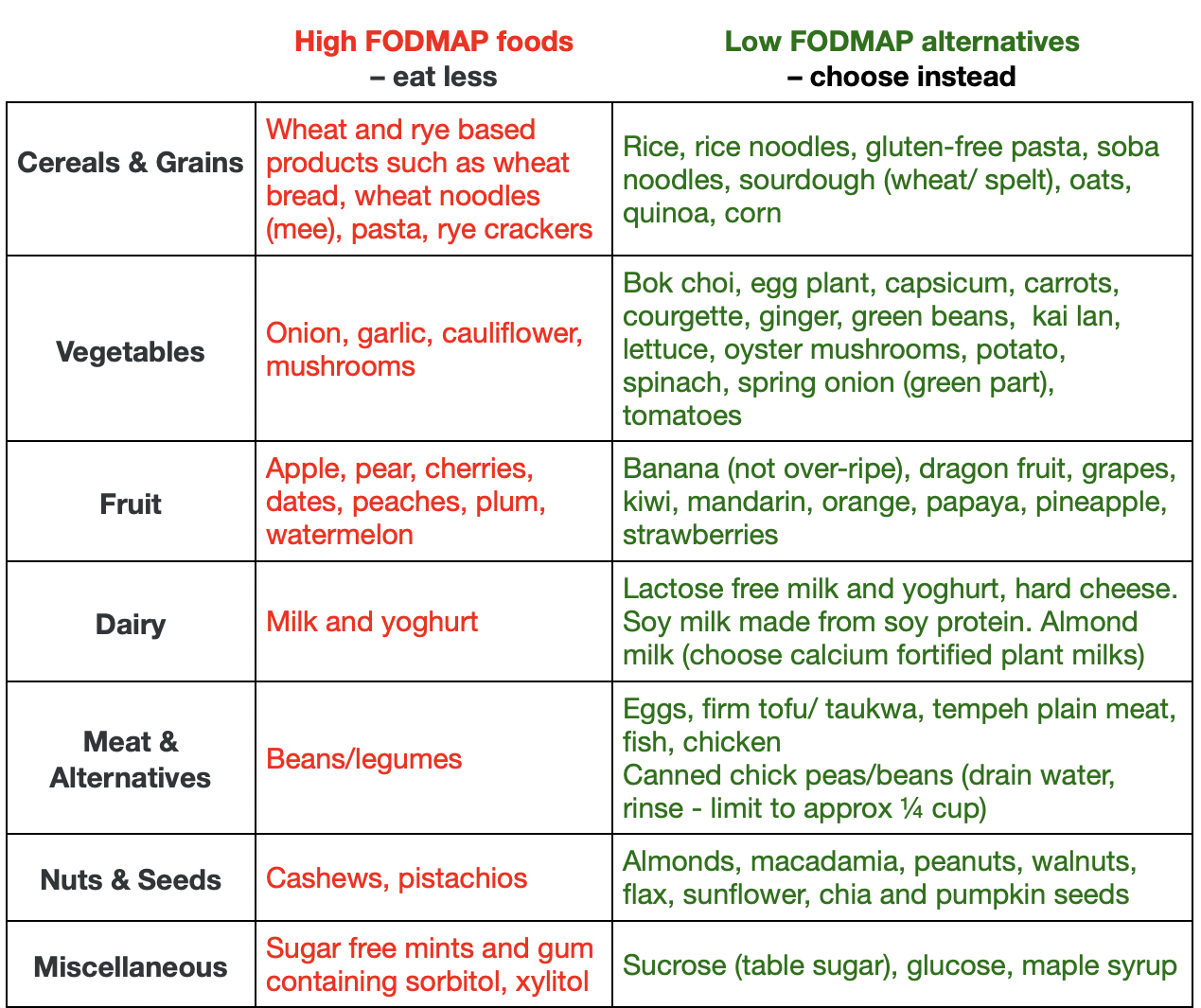International Gluten Free Education & Awareness
Local Singapore Recommendations

FODMAPS
Could It Be FODMAPs Triggering Your Gut Symptoms?
You may be living with celiac disease and know you have it well controlled on a gluten free diet but still experience symptoms. Or despite a negative screen for celiac disease you may feel that foods containing gluten can still trigger bloating, gas and discomfort.
It could actually be FODMAPs that are the culprit. FODMAPs are a group of sugar molecules that are poorly digested in humans. Wheat, rye and barley contain fructans which is a FODMAP, meaning that following a gluten free diet will substantially lower your FODMAP intake. Naturally gluten free grains such as rice, maize and quinoa are all low FODMAP.
Modifying FODMAP intake can be an effective approach for irritable bowel syndrome (IBS) and other functional bowel disorders (bloating, wind, pain). This approach can help up to 3 out of 4 people gain more control over their symptoms rather than the symptoms controlling them.
FODMAPs
Fermentable
Oligo-saccharides (fructans and galacto oligosaccharides/ GOS)
Di-saccharides (lactose = milk sugar)
Mono-saccharides (excess fructose)
And
Polyols (eg sorbitol, mannitol)
FODMAPs can be poorly digested in the small intestine and are then fermented by our gut bacteria in the large intestine to produce gas, and cause more water to pass through the bowel. This happens in all of us, some gas means our gut bugs are being fed! However in people with a sensitive gut this can trigger symptoms such as bloating, pain, and diarrhoea. This video shows how.
Remember when modifying your FODMAP intake portion size and the ‘additive effect’ of eating multiple higher FODMAP foods over the same day or a few days are very important.*
For example, for some people eating wheat once a day may be tolerated but including wheat at every meal may not be.
A useful resource is the Monash University FODMAP website and app with a comprehensive food guide and recipes.
As the FODMAP diet can seem complex and confusing, advice is best provided by a dietitian who has received training and is experienced in this area. They can help you to individualize the process and also ensure that your diet is nutritionally balanced. Please note that the diet can be restrictive and is not suitable for everyone, especially for those with a history of disordered eating.
Step One is the low FODMAP diet which restricts these sugars for 2-6 weeks to see if symptoms improve. Step Two is where you gradually reintroduce high FODMAP food groups one at a time. Once you have identified your main triggers Step Three involves moving to a personalised FODMAP diet which is more liberal but allows symptom control. It is essential not get ‘stuck’ and follow the low FODMAP phase for too long as the diet can lower levels of some of the beneficial bacteria in the gut.
The chart below will give you an idea of common problem foods and substitutions during the diet.

What About Non-Coeliac Gluten/ Wheat Sensitivity
Non coeliac gluten sensitivity is when symptoms similar to celiac disease are experienced, but it is not clear how the immune system might be involved because no antibodies are produced, and there does not appear to be damage to the gut lining.
Diagnosing NCGS remains complicated – the current research shows that it does exist but that we do not have an accurate test for it yet. It may be other non-gluten proteins in wheat (eg amylase trypsin inhibitors) that cause symptoms, the research is on-going.
The gold standard for food intolerance testing is to exclude the suspected food, followed by gradual reintroduction to see if symptoms reoccur – in research this would be blinded which of course is tricky in the real world!
Consider that it may be FODMAPs that are contributing to symptoms. If FODMAPs allow adequate control of symptoms you have your answer.
If you do feel better on a gluten free diet then naturally you are likely to stick to it but do ensure that you are not restricting your diet un-necessarily.
Lastly, remember it is vital to be properly tested for celiac disease before you eliminate gluten from your diet.
Bridget Marr
Registered Dietitian
www.nutritionalsolutions.com.sg
Resources:
Additional Information from Monash University
References:


